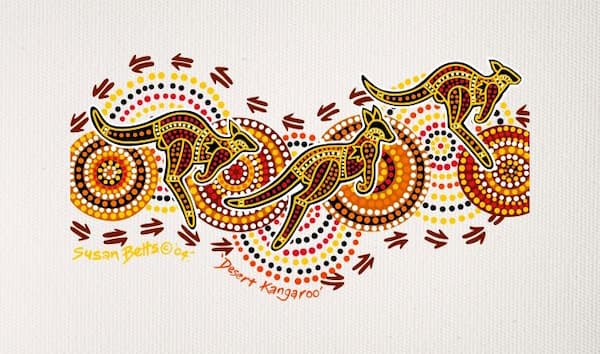
15 July, 2024
Beyond Branding: The Functional Benefits of Promotional Caps
Promotional caps are a staple in the marketing arsenals of businesses worldwide. While they are undeniably effective tools for branding, their benefits extend far beyond mere logos and slogans. There are also many functional advantages that sometimes get overlooked, but they can be just as important.
1. Sun Protection - A Health Perspective
Sun protection is a critical health issue in Australia, primarily due to the country's unique environmental conditions and high rates of skin cancer.
High UV Levels and Skin Cancer Rates in Australia
UV Radiation and Its Impact: Australia experiences some of the highest levels of ultraviolet (UV) radiation in the world. This is due to its proximity to the equator and a depleted ozone layer over parts of the country. UV radiation is a major risk factor for skin cancers, including melanoma, basal cell carcinoma, and squamous cell carcinoma.
Skin Cancer Statistics: Australia has one of the highest rates of skin cancer globally. According to Cancer Council Australia, approximately two in three Australians will be diagnosed with skin cancer by the time they are 70. Melanoma is particularly prevalent, with Australia and New Zealand having the highest rates worldwide.
The Role of Promotional Caps in Sun Protection

Protection Against UV Rays: Caps provide a physical barrier against UV rays, shielding the face, ears, and neck – areas that are often exposed and vulnerable to sun damage. The brim of the cap, ideally at least 7.5 cm wide, is crucial for effective protection.
Material and Design Considerations: For optimal protection, they should be made of closely woven fabric that does not allow UV rays to penetrate. Some caps are designed with UPF (Ultraviolet Protection Factor) ratings, indicating the level of UV protection provided by the fabric. A UPF50+ rating, for example, allows only 1/50th of the sun's UV radiation to reach the skin.
Complementing Sunscreen Use: While they provide significant protection, they should be used in conjunction with other sun protection measures. This includes applying broad-spectrum sunscreen to exposed skin, wearing sunglasses for eye protection, and seeking shade during peak UV hours.
Australian Sun Safety Campaigns and Guidelines
Public Health Campaigns: Australia's public health campaigns, such as Cancer Council's "Slip! Slop! Slap! Seek! Slide!" campaign, emphasise the importance of slipping on a shirt, slopping on sunscreen, slapping on a hat, seeking shade, and sliding on sunglasses.
Guidelines for Outdoor Activities: For outdoor activities, especially during summer and in places with high UV index levels, Australian health authorities recommend wearing a hat as part of the sun protection regime. This is particularly relevant for outdoor workers, children in schools, and participants in outdoor sports.
Promotional caps, when designed with sun safety in mind, can play a significant role in mitigating the risk of skin cancer in Australia. They serve as a practical, effective, and accessible tool for sun protection, especially when aligned with broader public health campaigns and sun safety guidelines. By incorporating these caps into promotional strategies, brands can contribute positively to public health and resonate with the Australian community's growing awareness and concern about skin cancer prevention.
2. Eco-Friendly Materials - Sustainability in Focus

The use of eco-friendly materials, is a growing trend, particularly in Australia, where environmental consciousness is notably high.
Eco-Friendly Materials for Caps
Recycled Plastics: Many caps are now being made from recycled plastics, including PET bottles. This not only helps in reducing plastic waste but also conserves the resources and energy typically required in the production of new plastic materials. Ones made from recycled plastics are durable, lightweight, and can be repurposed at the end of their lifecycle.
Organic Cotton: Unlike conventional cotton, organic cotton is grown without the use of harmful pesticides or genetically modified organisms (GMOs). This makes it a more sustainable option, as it reduces environmental pollution and promotes healthier ecosystems. Organic cotton caps are soft, breathable, and hypoallergenic, making them comfortable to wear and appealing to consumers with sensitive skin or allergies.
Bamboo Fibre: Bamboo is a highly sustainable material due to its fast growth rate and minimal need for pesticides and fertilisers. Bamboo fibre is used to make caps that are soft, antibacterial, and UV resistant. Additionally, bamboo caps are biodegradable, adding to their environmental appeal.
Sustainability in Focus
Reducing Carbon Footprint: The production of eco-friendly materials typically has a lower carbon footprint compared to traditional materials. By choosing such materials, companies contribute to the reduction of greenhouse gas emissions.
Water Conservation: Organic cotton and bamboo require significantly less water to grow compared to conventional cotton. This is particularly relevant in Australia, where water conservation is a critical issue due to frequent droughts.
Waste Reduction: Using recycled materials helps in reducing the amount of waste sent to landfills. It also promotes a circular economy where materials are reused and recycled, rather than disposed of after a single use.
Consumer Perception and Brand Image
Aligning with Consumer Values: Australian consumers are increasingly environmentally conscious and prefer to support brands that demonstrate a commitment to sustainability. By using eco-friendly materials, companies can align themselves with these consumer values.
Brand Differentiation: Eco-friendly promotional caps offer a point of differentiation in the market. They can help a brand stand out as environmentally responsible and forward-thinking.
Long-Term Brand Loyalty: Consumers who prioritise environmental sustainability are more likely to develop long-term loyalty to brands that share their values. This can lead to repeat business and positive word-of-mouth.
3. Innovative Designs - Beyond Aesthetics

The realm of cap design has evolved significantly, transcending mere aesthetic appeal and delving into functional innovation. This shift reflects a growing demand for products that offer practical benefits while maintaining style.
1. Built-in LED Lights
Purpose: Ones with built-in LED lights cater to the safety needs of night runners, cyclists, and workers in low-light conditions. These lights enhance visibility, making the wearer more noticeable to others and helping to prevent accidents.
Design Considerations: The LEDs are usually integrated into the brim or body. They are designed to be lightweight and unobtrusive, often with adjustable brightness levels and directional focus.
Power Source: Typically, they use small, rechargeable batteries that are inconspicuously integrated into the design. Some may use solar cells to recharge, adding an eco-friendly aspect.
2. Sweat-Resistant Fabrics
Material Innovation: Ones designed for athletes and active individuals often features sweat-resistant or moisture-wicking fabrics. These materials draw sweat away from the skin, aiding in evaporation and keeping the wearer cool and comfortable.
Breathability and Comfort: The fabrics used are not only moisture-resistant but also highly breathable, ensuring air circulation and reducing heat buildup.
Durability: These materials are usually also quick-drying and resistant to odours and bacteria, making the caps more durable and hygienic for prolonged use.
3. Solar-Powered Fans
Cooling Mechanism: Some include small solar-powered fans. These fans provide a cooling effect, which is particularly beneficial in hot climates or during strenuous outdoor activities.
Solar Panels: Small solar panels are usually integrated into the design, often on the brim or top, where they can easily absorb sunlight.
Environmental Aspect: This feature aligns with eco-friendly practices, as it uses renewable energy for functionality, reducing reliance on traditional batteries.
4. Caps as Cultural Canvas

Using them as a canvas for cultural expression is an increasingly popular and impactful approach in the realm of promotional merchandise, especially in a country as culturally rich and diverse as Australia.
Celebrating Indigenous Art
Representation of Indigenous Artwork: Integrating Indigenous artwork into designs is a powerful way to celebrate Australia's rich Indigenous heritage. These designs can feature traditional patterns, symbols, and colours that hold significant cultural meaning. Such integration offers a platform for Indigenous stories and histories to be shared and appreciated more broadly.
Collaborations with Indigenous Artists: Collaborating with Indigenous artists not only ensures authenticity in the artwork but also supports and promotes the artists themselves. It's an opportunity to contribute to the preservation and recognition of Indigenous cultures.
Educational Aspect: Featuring Indigenous art on caps can serve an educational purpose, sparking curiosity and conversations about the stories, meanings, and history behind the designs. It can be a subtle yet effective way of increasing cultural awareness and understanding.
Incorporating Local Design Elements
Highlighting Local Flora and Fauna: Designs inspired by Australia's unique flora and fauna can make them distinctly local and appealing. From the iconic kangaroo and koala to the diverse plant life like eucalyptus and waratah, these elements can create a strong connection with the Australian landscape.
Celebrating Australian Landmarks and Icons: Featuring famous Australian landmarks like the Sydney Opera House, the Great Barrier Reef, or Uluru can transform them into wearable souvenirs that resonate with both locals and tourists.
Supporting Local Artists and Designers: Collaborating with local artists and designers for designs not only promotes local talent but also brings a variety of creative styles and perspectives to the products.
Community Engagement and Social Impact
Cultural Festivals and Events: Ones designed with cultural themes can be aligned with various cultural festivals and events in Australia, celebrating diversity and community spirit.
Supporting Cultural Initiatives: A portion of proceeds from the sales of these can be directed to support cultural initiatives, Indigenous communities, or local arts programs.
Brand Storytelling: Incorporating cultural elements allows brands to tell a more meaningful story, connecting their identity with the cultural fabric of Australia. This can enhance brand perception as socially conscious and connected to community values.
Ethical Considerations and Authenticity
Cultural Sensitivity and Appropriation: It's crucial for brands to approach cultural designs with sensitivity and respect. This involves avoiding cultural appropriation and ensuring that the use of cultural symbols and artwork is appropriate and respectful.
Authentic Representations: Ensuring that cultural elements are represented authentically and respectfully is key. This may involve consulting with cultural experts or community leaders to ensure accuracy and sensitivity.
Educational Labelling: Providing information about the cultural significance of the designs on labels or accompanying materials can enhance the educational value of the caps.
5. Thermal Regulation for Outdoor Workers

Thermal regulation in workwear, particularly in caps, is a crucial factor for employees working in outdoor settings like construction, landscaping, or agriculture, especially in a country like Australia known for its extreme weather conditions. Below is an expanded exploration of how they can be optimised for thermal regulation and the benefits they bring to outdoor workers:
Material Innovation for Thermal Regulation
Moisture-Wicking Fabrics: These materials are designed to draw sweat away from the body, helping to keep the wearer dry and comfortable. Caps made from moisture-wicking fabrics can significantly reduce discomfort caused by sweat, particularly under helmets or other headgear.
Breathable Materials: Ones made with breathable fabrics allow for better air circulation around the head. This is crucial for preventing overheating, especially during the hot Australian summers.
UV-Protective Fabrics: In addition to thermal regulation, materials that offer UV protection are beneficial for outdoor workers in Australia. They help protect the skin against harmful UV rays, reducing the risk of sunburn and long-term skin damage.
Design Features for Enhanced Comfort
Ventilated Design: Ones with built-in ventilation, such as mesh panels or perforations, allow for increased airflow, which helps in cooling down the head and reducing sweat accumulation.
Light-Coloured Fabrics: Lighter colours reflect sunlight rather than absorbing it, which can help in keeping the head cooler. This is particularly useful in areas with intense sunlight and high UV indexes.
Wide Brims and Neck Flaps: Ones with wide brims provide shade for the face, while those with neck flaps offer additional protection for the neck, which is often exposed to direct sunlight.
Impact on Worker Productivity and Health
Comfort and Concentration: By regulating temperature and managing sweat, they can significantly improve comfort for outdoor workers. This, in turn, aids concentration and reduces the risk of heat-related stress and fatigue.
Health and Safety: Effective thermal regulation is a key aspect of occupational health and safety, especially in physically demanding outdoor jobs. It can prevent heatstroke and other heat-related illnesses, ensuring a safer working environment.
Morale and Job Satisfaction: Comfortable workwear can enhance overall job satisfaction and morale among workers. It shows that the employer considers the well-being of their employees, which can improve work relationships and reduce turnover.
The Wrap
They offer a myriad of benefits that transcend traditional branding. By focusing on aspects such as health, sustainability, innovation, inclusivity, cultural expression and worker comfort, businesses can leverage these everyday items in unexpectedly beneficial ways. As we continue to evolve in our approach to marketing and consumer engagement, it’s clear that even something as simple as a cap can carry significant weight in a brand's promotional strategy.
The Caps Only Team

